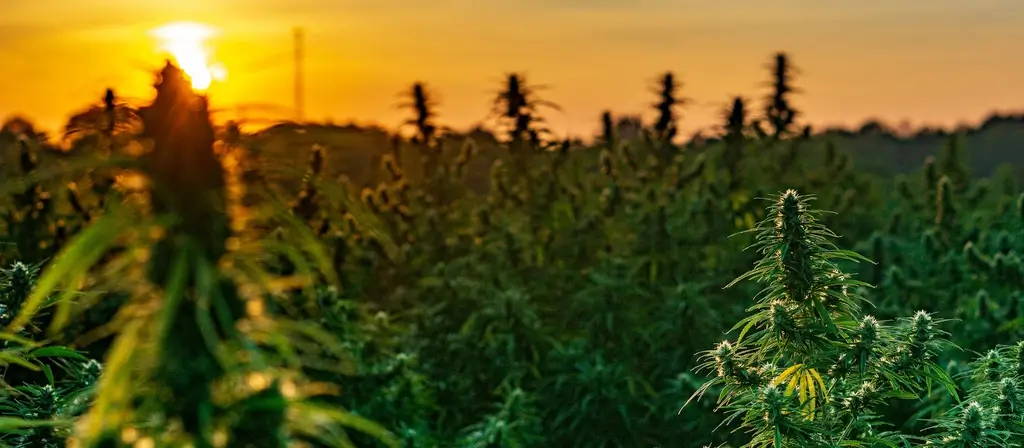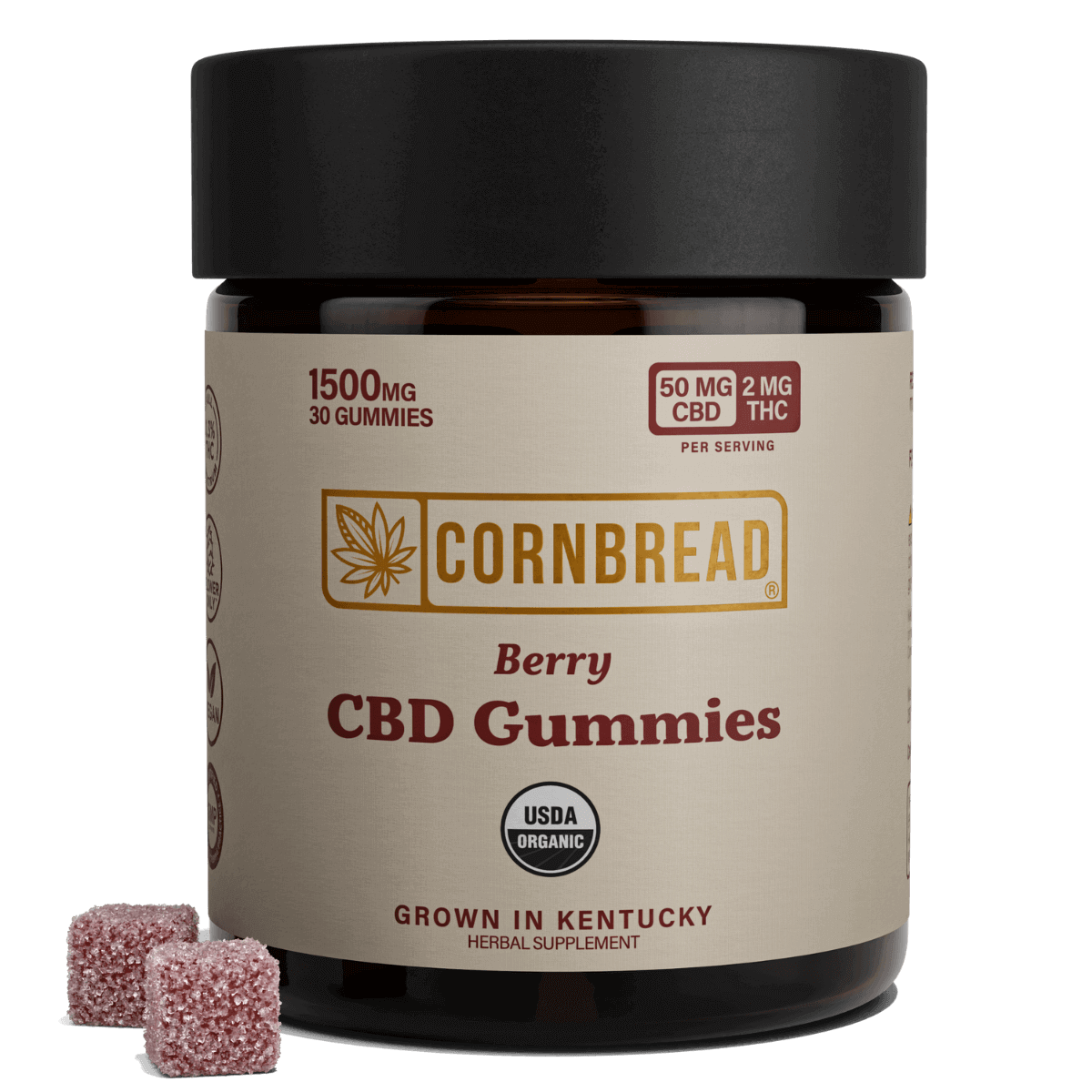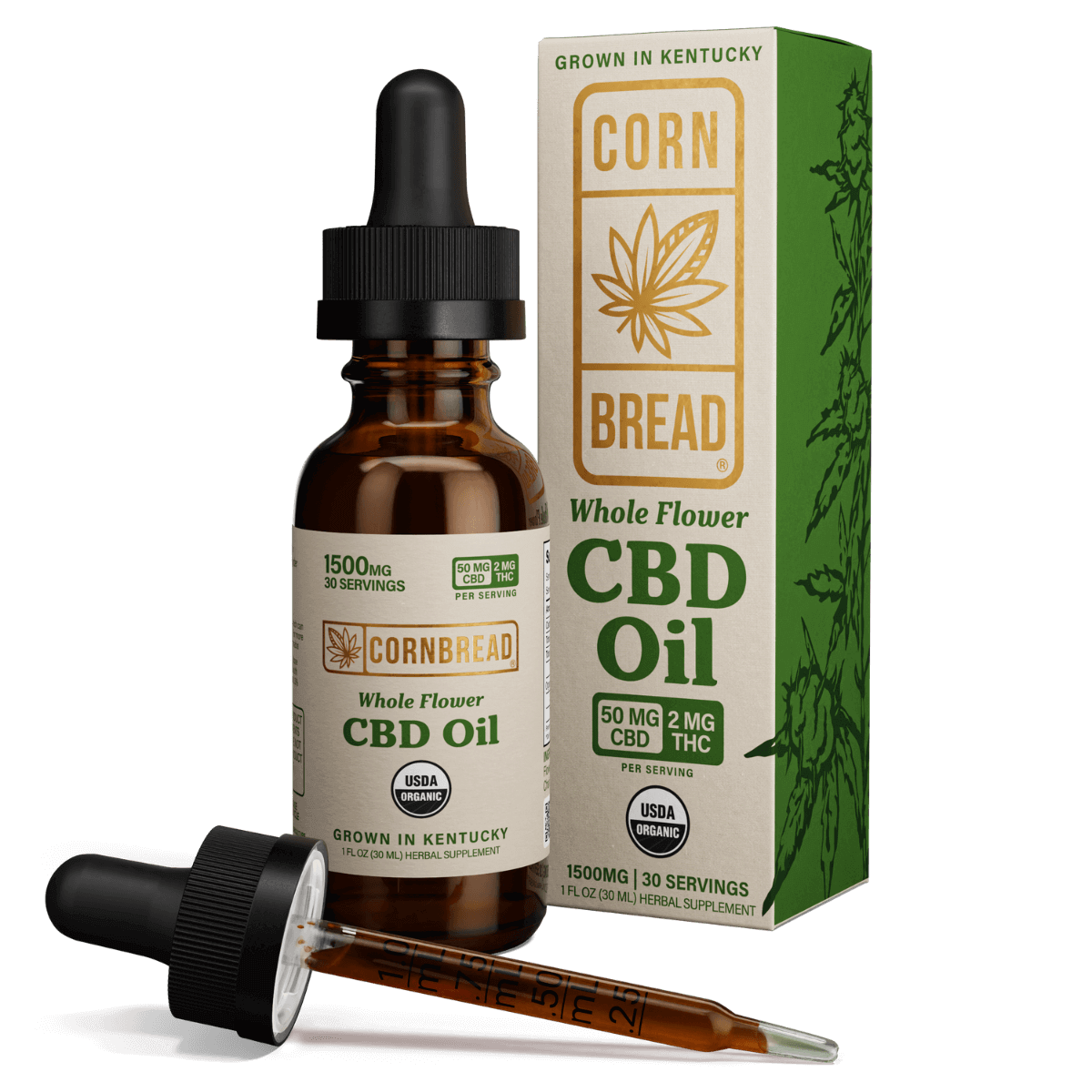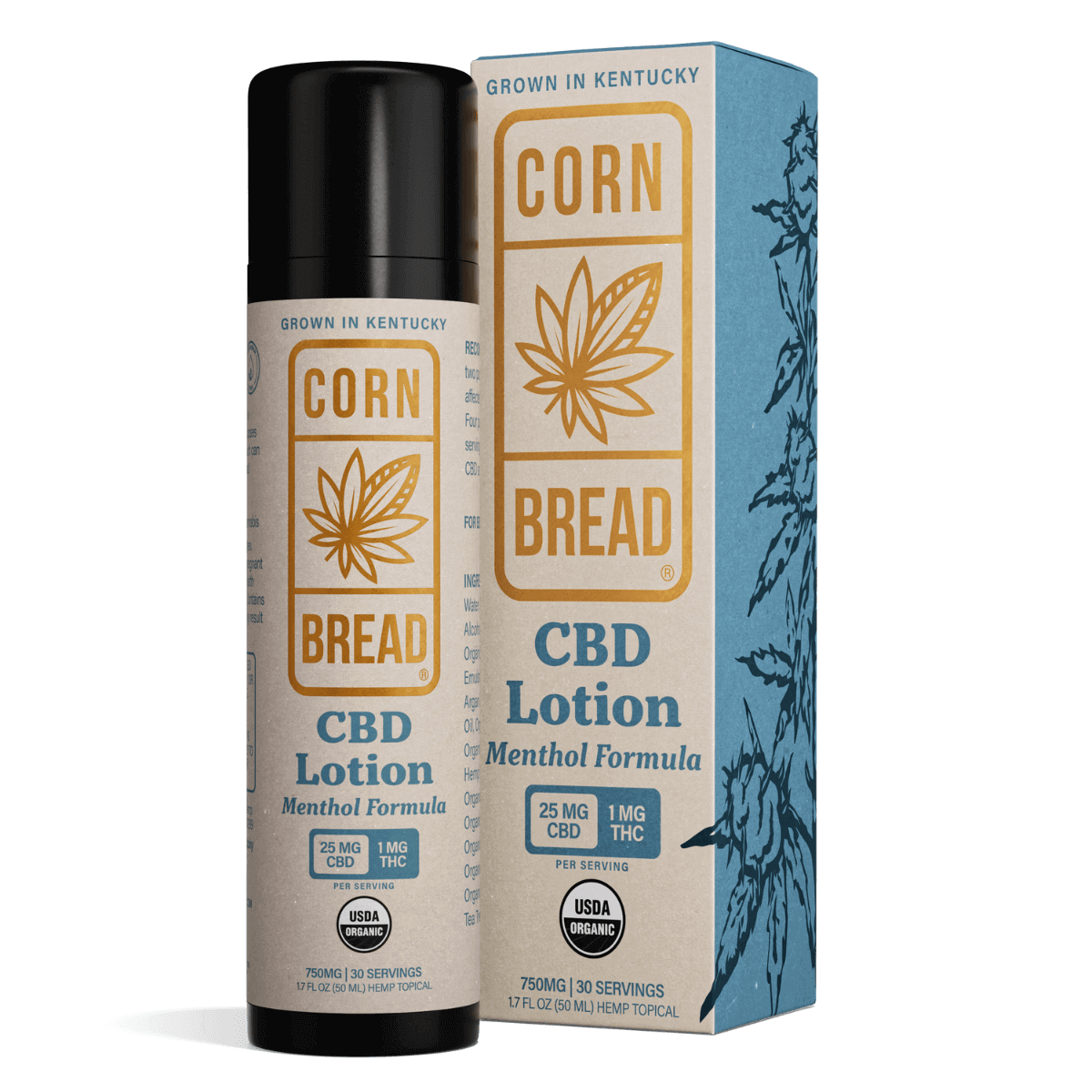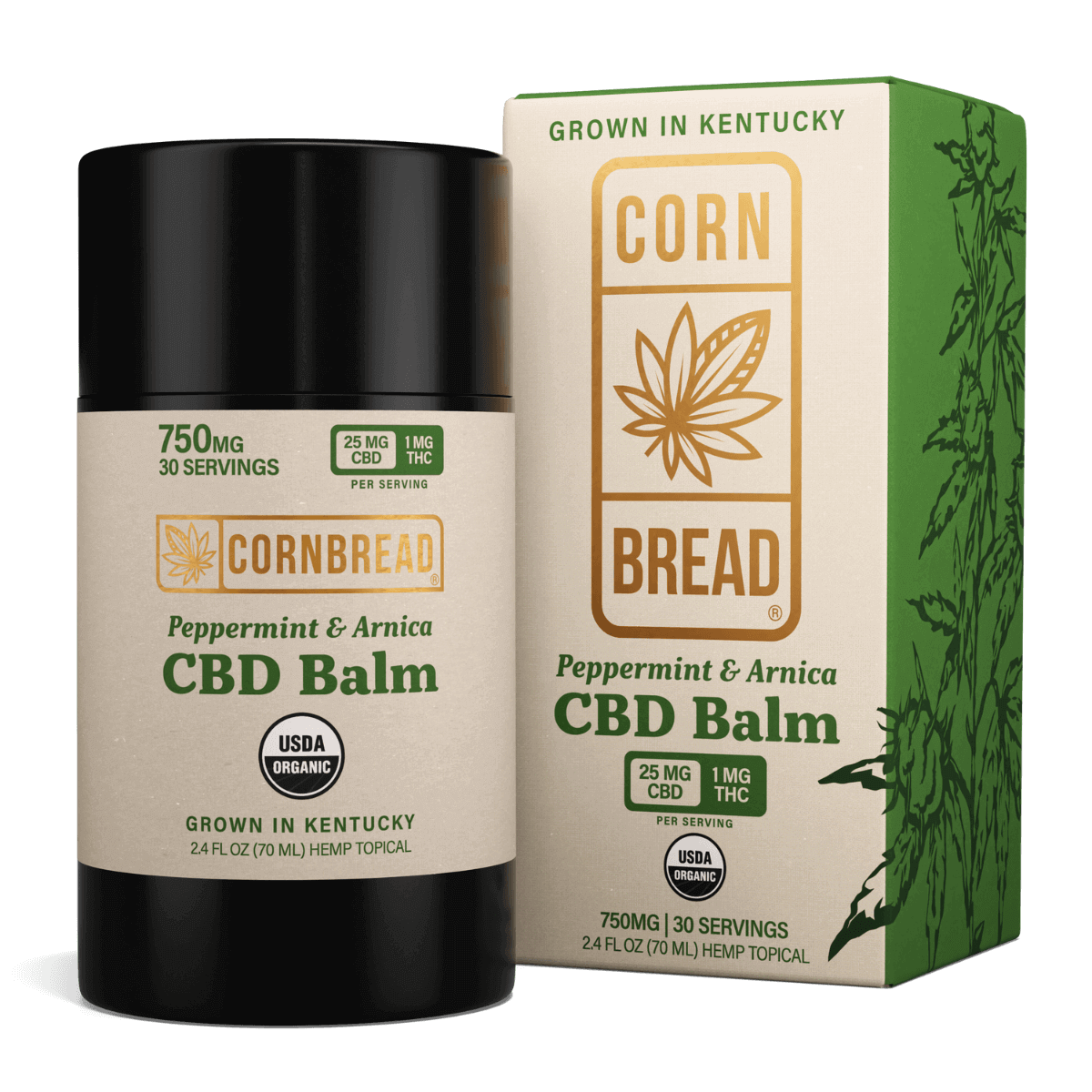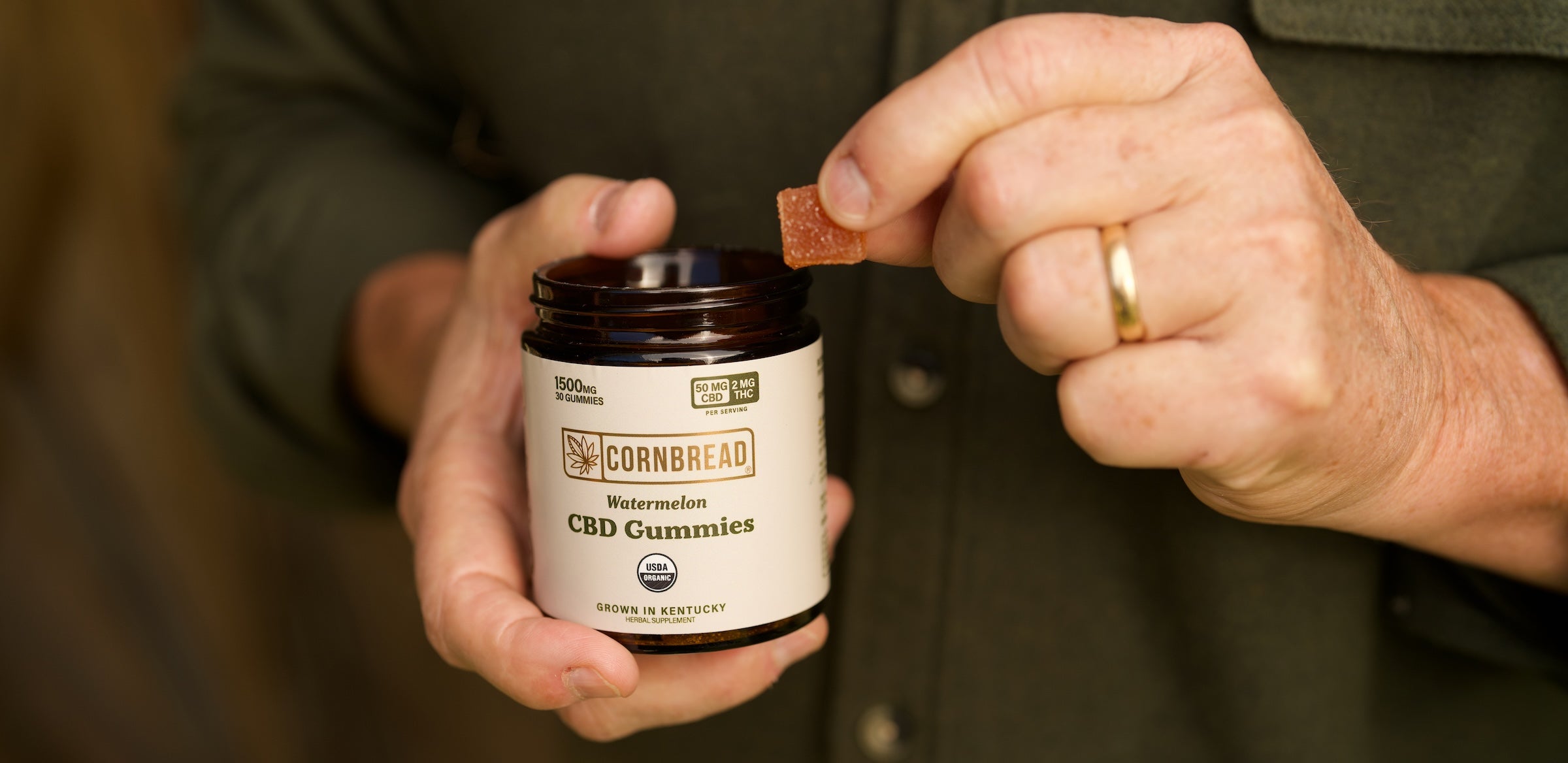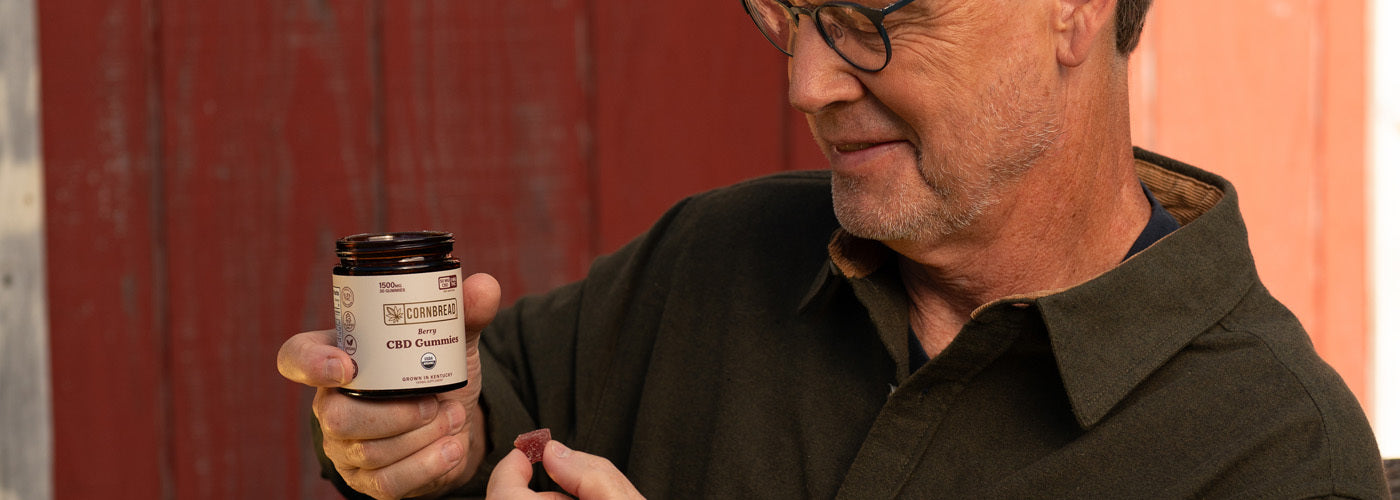Table of Contents
Introduction
If you are familiar with CBD and THC, you have probably started looking into the minor cannabinoids, as well. There’s no need to feel lost. This article is to help you better understand the most prominent cannabinoids, starting with THC and CBD and going much further. This post contains quotes and links to scientific research into cannabinoids that look into their potential future uses.
None of the information in this article should be taken as a claim by Cornbread Hemp that any of our products perform a certain way based on their cannabinoid content. This article is purely for informational and educational purposes to help CBD consumers better understand the existing body of work in cannabinoid research.
Cornbread Hemp’s products are not intended to diagnose, treat, prevent, or cure any disease. For information on how our products perform, read through thousands of our verified customers’ anecdotal experiences with our products.
What Are Cannabinoids?
Cannabinoids are chemical compounds produced by the cannabis plant. The best-known cannabinoid is THC, followed by CBD. When Congress legalized hemp in the Farm Bills of 2014 and 2018, the only cannabinoid it restricted was delta-9 THC. All other cannabinoids are now legal under federal law. Cornbread Hemp makes USDA certified organic full spectrum hemp extract that is high in CBD content, as well as other cannabinoids.
How Many Cannabinoids Are There?
There are over 100 phytocannabinoids. One recent study suggests there could be as many as 150 cannabinoids in the cannabis plant. That’s a lot. As a full spectrum extract, our hemp products contains a number of minor cannabinoids at a detectable level. Our third-party lab partner,Kaycha Labs, tests for eleven primary cannabinoids.
- THCa — Tetrahydrocannabinolic acid
- Δ8 THC — delta-8 Tetrahydrocannabinol
- Δ9 THC — delta-9 Tetrahydrocannabinol
- THCV — Tetrahydrocannabivarin
- CBDa — Cannabidiolic acid
- CBD — Cannabidiol
- CBDV — Cannabidivarin
- CBN — Cannabinol
- CBC — Cannabichromene
- CBGa — Cannabigerolic acid
- CBG — Cannabigerol
Among these most common 11 cannabinoids, the Cornbread Hemp extra strength USDA organic Whole Flower CBD oil contains detectible levels of seven of them, according to our CoA prepared by Kaycha Labs:
- CBD — Cannabidiol, the most popular non-intoxicating cannabinoid
- CBDa — the precursor cannabinoid to CBD
- Δ9 THC — the cannabinoid that gets you “high”
- CBN — formed by the breakdown of Δ9 THC
- CBDV — a homolog of CBD
- CBC — The third most common cannabinoid, behind CBD and Δ9 THC
- CBG — The non-acidic form of CBGa, the parent molecule for all cannabinoids
What are all these cannabinoids? What do they do? Here’s a quick rundown of the primary minor cannabinoids that you’re likely to find in a full spectrum hemp extract.
How Do Cannabinoids Develop?
The first thing to learn when thinking about cannabinoids as a whole is to know how they develop. The first cannabinoid that gets produced in the hemp plant is CBGa, or cannabigerolic acid. This is the parent cannabinoid from which all other cannabinoids develop.
From there, the CBGa converts into the three major cannabinoid precursors: THCa, or tetrahydrocannabinolic acid; CBCa, or cannabichromenic acid; and CBDa, cannabidiolic acid. Depending on the strain, some CBGa may convert into CBG. However, most CBGa will become either THC or CBD in the end, depending on the strain of cannabis.
Cornbread Hemp's Cannabinoids
As CBD users become more sophisticated in their research, and more mindful about how full spectrum hemp extract interacts with their bodies, they begin to research these cannabinoids.
Please keep in mind: the research into cannabinoids is still quite young. Because various facets of the American federal government have blocked research into the beneficial aspects of cannabinoids for generations, the hard science in this area is remarkably lacking.
While you are likely to find interesting the summaries below of recent cannabinoid research, please do not interpret any of it as medical claims for Cornbread Hemp products. More research is needed before we know how these cannabinoids affect the human body, and at what dosage. With that in mind, here’s a breakdown of what science currently knows about each of of these cannabinoids.
CBGa
Cannabidiolic acid is the parent molecule of all cannabinoids. CBGa does this by developing into the three major cannabinoid precursors: THCa, CBDa, and CBCa. These cannabinoid acids go on to become THC, CBD, and CBC. In some cannabis strains, CBGa can also develop into CBG. CBGa was first discovered in the 1960’s by an Israeli research team led by Dr. Raphael Mechoulam.
But despite being known to science for nearly 60 years, very little is known about CBGa’s potential. Like many aspects of cannabis science, more research is needed on CBGa.
CBG
Cannabigerol, or CBG, has been found "to have "potential...". CBG comes from the precursor cannabinoid CBGa. Because most CBGa develops into THC and CBD, CBG is a rare cannabinoid to find in a full spectrum hemp extract.
What could CBG be good for? While a significant number of animal studies and pre-clinical research has been conducted on CBG, more research is needed. This is because decades of federal prohibition have limited researchers' ability to study the beneficial aspects of the cannabis plant.
THCa
Tetrahydrocannabinolic acid is the precursor cannabinoid to Δ8 THC and Δ9 THC. Unlike delta-9 Tetrahydrocannabinol, THCa is a non-intoxicating cannabinoid. THCa is present in many full spectrum hemp extracts. This happens because the THCa did not fully decarboxylate into delta-9 tetrahydrocannabinol.
Despite being a common minor cannabinoid, THCa “remains largely unexplored,” according to a 2020 study. What could THCa be good for? Very little research has been done into this particular cannabinoid. More research is needed.
Δ8 THC
Delta-8 Tetrahydrocannabinol binds to CB1 receptors, similar to delta-9 THC, and therefore produces a similar psychoactive effect. However, delta-8 THC presents a “lower psychotropic potency” than delta-9 THC.
In nature, delta-8 THC only occurs as a fraction of a percent of a dried hemp flower. But in laboratories, chemists are able to synthesize delta-8 THC from either CBD or delta-9 THC. This has become a popular form of skirting the federal ban on delta-9 THC. But anyone interested in trying delta-8 THC vape cartridges should be very careful for several reasons:
- The DEA announced in August 2020 that delta-8 THC was a Schedule I drug.
- Delta-8 THC could flag positive for THC on a drug test by how it breaks down into metabolites in the body.
THCv
Most cannabis strains only contain trace or undetectable amounts of THCV, or Tetrahydrocannabivarin. But as more research gets published on this unique cannabinoid and its interesting properties, it has the potential to become more popular in the future.
What does the research tell us about THCV? Pre-clinical studies in animals have looked at a variety of potential effects of THCV. However, more research is needed to better understand how THCV affects the human body.
CBN
Cannabinol, or CBN, forms from the breakdown of THC over time, so older cannabis has higher levels of CBN.14 What is CBN good for? Although there have been pre-clinical studies into a variety of potential wellness benefits, more study is needed.
CBDa
Cannabidiolic acid, or CBDa, is the precursor cannabinoid to CBD. It usually converts to CBD when decarboxylated by heat or sunlight. Therefore, most CBD products will have a very low level or CBDa — if any CBDa at all — because the goal of most CBD products is to maximize the amount of CBD. What does the science say about CBDa? While pre-clinical research has been conducted in CBDa's potential, more research is needed.
CBDV
Cannabidivarin, or CBDV, is an analog to CBD. That means it has a similar structure and similar non-intoxicating effect on the body. CBDV was discovered in 1971, but it is only now being fully researched. A major pharmaceutical company is currently studying an isolate form of CBDV as a potential drug.
What else could CBV do? There has been pre-clinical animal research into CBDV, but more research is needed. Decades of prohibition have limited our understanding of how cannabinoids like CBDV can benefit our bodies.
CBC
Cannabichromene, or CBC, is the third of the three primary cannabinoids, after THC and CBD. CBC develops into a cannabinoid in the same manner as THC and CBD. The parent cannabinoid, CBGa, converts into three acid groups: THCa, CBDa, and CBCa. These compounds then convert into the mature cannabinoids: THC, CBD, and CBC.
Like CBD, CBC is non-intoxicating. Preliminary research into CBC has been conducted. But decades of prohibition has limited our understanding of possible health benefits into cannabinoids like CBC until recent years.
Cannabinoid Guide: Conclusions
By reading this guide to cannabinoids, you gained a greater appreciation for the complexity of cannabis, we hope. As discussed, the cannabis plant can produce as many as 150 distinct cannabinoids, a far greater number than we covered in this article.
Please keep in mind that all the studies quoted and cited in this article are pre-clinical in nature. That means the findings are preliminary and should not be taken as medical claims made by Cornbread Hemp.
More research into the effects of cannabinoids needs to be done. Until then, curious people need to do their own research to draw their own conclusions

